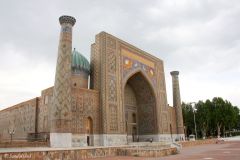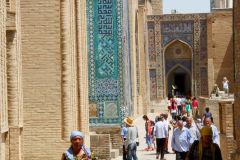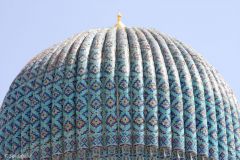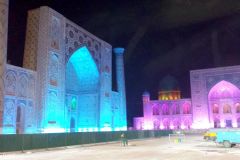Samarkand was at the centre of the famous Silk Road. It passed through present-day Uzbekistan and was of vital importance to the trade between east and west.
The UNESCO World Heritage List includes more than a thousand properties with outstanding universal value. They are all part of the world’s cultural and natural heritage.
Official facts
- Full name of site: Samarkand – Crossroad of Cultures
- Country: Uzbekistan
- Date of Inscription: 2001
- Category: Cultural site
UNESCO’s World Heritage Centre’s short description of site no. 0603:
The historic town of Samarkand is a crossroad and melting pot of the world’s cultures. Founded in the 7th century B.C. as ancient Afrasiab, Samarkand had its most significant development in the Timurid period from the 14th to the 15th centuries. The major monuments include the Registan Mosque and madrasas, Bibi-Khanum Mosque, the Shakhi-Zinda compound and the Gur-Emir ensemble, as well as Ulugh-Beg’s Observatory.
My visit
In 2014 I was on a road trip to several of the ancient Silk Road cities, Samarkand being the most famous and mythical of them all. The three madrasas which form the large complex of Registan are hugely impressive. It is not only because of the shear size of the buildings but also because of the craftmanship they have employed in all the details. The Uzbeks are of course very proud of their heritage, and they have over the decades done much to restore the mosques and sights throughout the city to what must have been their former glory.








